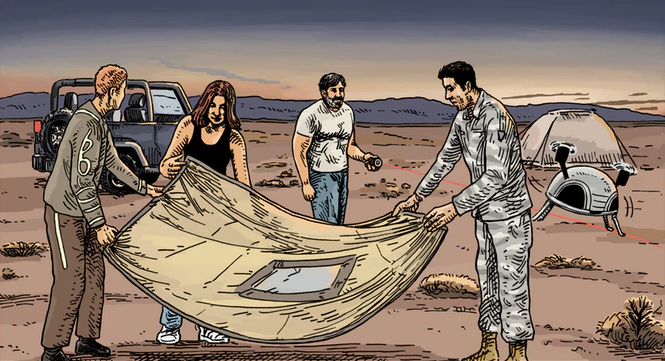When I met him earlier this month at Rose City Comic Con, Steven Stormoen gave me the worst pitch I’ve ever heard for his (or any!) comic series: “If you’re into insurance companies, you’re going to love The Pros.” He was dramatically underselling it.
The Pros has a decidedly cynical premise. It stars a group of covert agents working for an insurance company to fix events ahead of time in high risk scenarios in order to give the company foreknowledge about how said scenarios will turn out. The company doesn’t care what the agents do or whether the scenario has a happy or tragic conclusion, it just wants to know the outcome ahead of time so it can plan accordingly––and make a lot of money. It’s the kind of set up that can only come from a place of deep despair regarding the state of contemporary culture.
But here’s the thing: The Pros was clearly created by idealists. Stormoen is acknowledging the seeming hopelessness of our current state of affairs, affirming all our suspicions about the inherent corruption in our society and then making an argument for the only moral response to these facts: resistance. Even if you fail, you have to push back.
Don’t get the wrong idea here though. This is a fun book. Beautifully crafted by artist Jelena Dordevic. It’s farcical, cathartic fun. Which makes it all the more impressive an accomplishment that it is also a book about something.
You can pick up all four available issues of the first story arc at moreweight.net. …and you should.





















